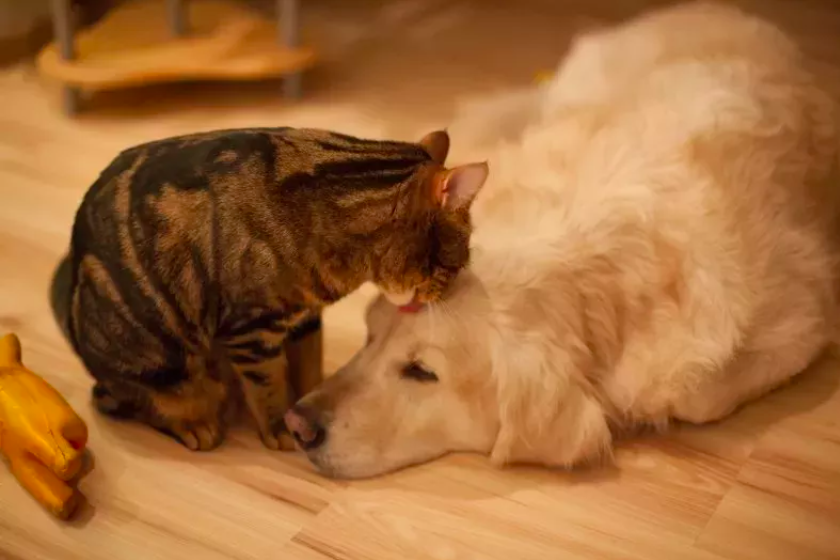Cats
Understanding Feline Behavior: Why Did My Cat Kill Her Kitten?
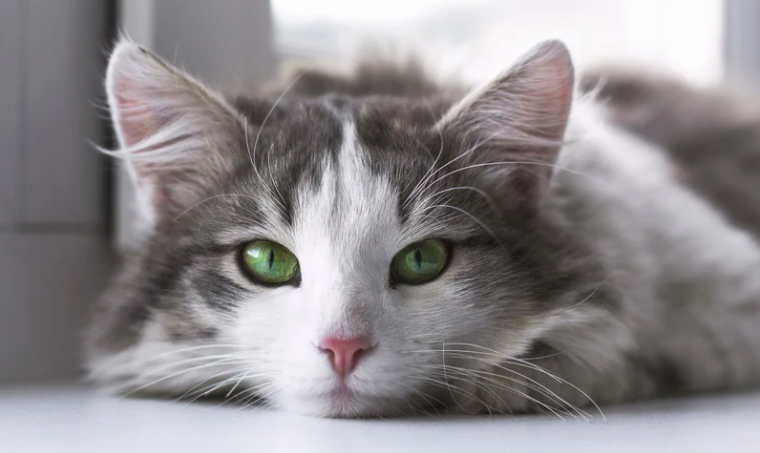
Understanding Feline Behavior: Why Did My Cat Kill Her Kitten?
If you’ve ever witnessed the heartbreaking sight of a mother cat inexplicably harming her own offspring, you’re not alone. This perplexing behavior can be both shocking and distressing.
In this comprehensive guide, we’ll delve into the various reasons behind this tragic phenomenon, offering insights, tips, and potential solutions to help you navigate this challenging situation.
The Natural Instincts of a Mother Cat: A Deeper Dive
When it comes to the perplexing behavior of a mother cat harming her own kittens, understanding the natural instincts governing feline maternal behavior is crucial.
Let’s delve into the intricate details, exploring the hormonal changes, protective instincts, and potential factors that can contribute to this unexpected aggression.

Hormonal Imbalances and Maternal Aggression
Postpartum Hormonal Changes:
- The postpartum period is marked by significant hormonal fluctuations in female cats. These changes are a natural part of the reproductive cycle, influencing the mother cat’s behavior and emotions. However, in some instances, these hormonal shifts can lead to heightened aggression.
Impact on Behavior:
- Hormonal imbalances may cause the mother cat to become more irritable, anxious, or defensive. This can manifest as aggression towards her kittens, as she may perceive them as potential threats during this vulnerable time.
Recognizing Signs:
- Observing changes in the mother cat’s behavior, such as increased restlessness, excessive grooming, or changes in vocalization, can serve as indicators of hormonal imbalances. Veterinary consultation is crucial to assess and address these hormonal issues promptly.
Environmental Stressors and Their Impact
Sensitivity to Environment:
- Cats are known for their sensitivity to environmental stimuli. Changes in their surroundings, exposure to unfamiliar scents or noises, and disruptions in their routine can induce stress.
Mother Cat’s Protective Instincts:
- While protective instincts are innate, they can be triggered excessively in response to perceived threats. If the mother cat feels her kittens are in danger due to environmental stressors, she may display aggression as a misguided attempt to shield them.
Creating a Calm Environment:
- Minimizing stressors in the environment, providing a quiet and secluded space for the mother cat and her kittens, and maintaining a consistent routine can alleviate potential triggers for aggressive behavior.
Recognizing Warning Signs: Navigating Maternal Aggression
Recognizing warning signs is crucial in addressing maternal aggression and ensuring the safety of both the mother cat and her kittens.
In this section, we will explore the behavioral cues and subtle signs that may indicate potential aggression, empowering cat owners to intervene effectively.
Behavioral Cues: Hissing, Growling, and Aggressive Posturing
Hissing as a Vocal Cue:
- Hissing is a vocalization that cats use to express fear, discomfort, or aggression. If you hear the mother cat hissing, it’s a clear signal that she is feeling threatened or stressed. Investigate the situation to identify and alleviate the cause promptly.
Growling as an Audible Warning:
- Growling is another audible warning sign that the mother cat may exhibit when she perceives a threat. It’s essential to differentiate between playful growls and those indicating aggression. A deep, prolonged growl should be taken seriously and addressed promptly.
Aggressive Posturing:
- The mother cat’s body language is a powerful indicator of her emotional state. Aggressive posturing, such as an arched back, flattened ears, and a raised tail, signals heightened alertness and potential aggression. Observing these physical cues requires immediate attention.
Monitoring Interactions: A Watchful Eye on Feline Dynamics
Close Observation:
- Regularly observe the interactions between the mother cat and her kittens. Create a routine for monitoring their behavior, especially during feeding, playtime, and rest periods. Consistent observation allows for early detection of any changes in behavior.
Intervening Cautiously:
- If warning signs are detected, it’s crucial to intervene cautiously. Abrupt actions or loud noises may escalate the situation. Approach calmly and slowly to avoid triggering further stress. Separate the mother cat from her kittens temporarily if necessary, allowing emotions to settle.
Seeking Professional Advice:
- Persistent or escalating aggression warrants professional advice. Consult with a veterinarian or animal behaviorist to assess the underlying causes and develop a tailored plan for intervention. Early intervention can prevent the recurrence of aggressive behavior.
Understanding Body Language: Decoding Feline Communication
Tail Position:
- Pay attention to the position of the cat’s tail. A raised tail can indicate excitement or aggression, while a puffed-up tail suggests fear or extreme agitation. A tucked tail may signal submission or discomfort.
Ear Movements:
- Flattened ears are a classic sign of aggression, signaling the cat’s defensive posture. Ears held back or rotated sideways may also indicate stress. Erect ears with a forward orientation usually denote curiosity or attentiveness.
Eye Contact and Pupil Dilation:
- Intense staring and dilated pupils can be indicators of heightened arousal or aggression. Break eye contact to diffuse tension and allow the cat to feel less threatened.
Potential Solutions and Preventive Measures: Fostering Feline Harmony
Addressing maternal aggression in cats requires a multifaceted approach that combines proactive measures to prevent future incidents and targeted solutions to create a safer environment for the mother cat and her kittens.
Let’s explore practical strategies and preventive measures to promote feline harmony.
Creating a Safe and Comfortable Environment
- Secluded Space for Relaxation: Designate a quiet and secluded space where the mother cat can retreat with her kittens. This area should be free from excessive noise, foot traffic, and other potential stressors. A comfortable and secure environment contributes to the overall well-being of the feline family.
- Comfortable Bedding and Essential Resources: Provide soft and comfortable bedding for the mother cat and her kittens. Ensure easy access to essential resources such as food, water, and a litter box within their designated space. Meeting these basic needs reduces stress and promotes a sense of security.
- Minimizing External Stimuli: Cats are sensitive to external stimuli, so minimizing disruptions is essential. Keep the environment calm by reducing loud noises, limiting visitors, and maintaining a consistent daily routine. A serene setting minimizes potential triggers for maternal aggression.
Gradual Socialization and Monitoring
- Introduction of Positive Interactions: Gradually introduce positive interactions between the mother cat and her kittens. Encourage playtime and gentle interactions to foster bonding. Positive experiences contribute to building trust and reducing the likelihood of aggressive behavior.
- Monitoring Interactions Closely: Keep a watchful eye on the interactions between the mother cat and her kittens. If any signs of aggression emerge, intervene promptly and assess the situation. Close monitoring allows for early detection and intervention, preventing the escalation of potential issues.
- Supervised Socialization: When introducing the kittens to external stimuli or other pets, ensure supervision. Gradual exposure to new experiences under controlled conditions helps the mother cat feel secure and minimizes stressors that may trigger aggressive behavior.
Conclusion
In conclusion, understanding why a cat might harm her own kittens requires a nuanced approach. From hormonal imbalances to environmental stressors, various factors can contribute to this distressing behavior.
By recognizing warning signs, seeking professional guidance, and implementing preventive measures, you can create a safer and more harmonious environment for your feline family.
Questions People Also Ask: (FAQs)
Can this behavior be prevented?
Yes, proactive measures such as creating a stress-free environment and gradual socialization can significantly reduce the risk of maternal aggression.
Is it common for mother cats to harm their kittens?
While uncommon, maternal aggression can occur. Understanding the underlying causes and addressing them promptly is key to preventing further incidents.
Are certain cat breeds more prone to this behavior?
There is no breed-specific predisposition to maternal aggression. It can affect cats of any breed or mix.
Should I separate the mother from her kittens if aggression occurs?
Temporary separation may be necessary, but it’s crucial to reintroduce them gradually under supervised conditions.
Can professional help make a difference?
Consulting with veterinarians and animal behaviorists can provide valuable insights and effective strategies to address and prevent maternal aggression.
We appreciate you for taking the time to read this article!
Finally, we hope you found this article interesting? And what do you think about ”Understanding Feline Behavior: Why Did My Cat Kill Her Kitten?!?”
Please feel free to share or inform your friends about this article and this site, thanks!
And let us know if you observe something that isn’t quite right.
Cats
Clever Cats: Breeds That Learn Fast

Clever Cats: Breeds That Learn Fast
Cats have always fascinated us with their agility, independence, and sometimes enigmatic behavior. Among the vast array of feline breeds, some stand out for their remarkable intelligence and ability to learn quickly.
In this article, we will delve into the world of these exceptional cat breeds, exploring their unique characteristics, training capabilities, and what makes them such quick learners.
Whether you’re a seasoned cat owner or considering adopting a new feline friend, this comprehensive guide will help you understand the breeds that are not only intelligent but also a joy to train.
Why Intelligence Matters in Cats
Understanding Feline Intelligence
Feline intelligence is a multi-faceted trait that encompasses problem-solving abilities, social learning, and adaptability. Unlike dogs, cats often showcase their intelligence in more subtle ways, such as manipulating objects to get what they want or learning routines and commands.
Benefits of Owning Intelligent Cats
Owning an intelligent cat comes with several benefits. These cats are more interactive and engaging, making them excellent companions. They can learn tricks, follow commands, and even understand basic household rules, which makes living with them more enjoyable and less challenging.
Top Cat Breeds Known for Their Intelligence
Abyssinian
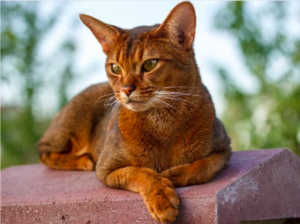
Overview
The Abyssinian is often hailed as one of the smartest cat breeds. Known for their curiosity and playful nature, Abyssinians are quick learners who thrive on mental stimulation.
Training and Activities
Abyssinians are highly trainable and enjoy interactive toys and puzzle feeders. They can learn tricks such as fetching and even walking on a leash. Their love for heights means they appreciate cat trees and climbing structures.
Siamese
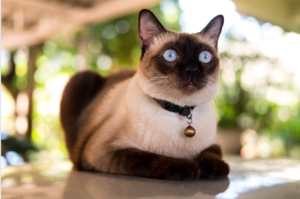
Overview
Siamese cats are not only intelligent but also highly vocal and sociable. They form strong bonds with their owners and are always eager to engage in activities.
Training and Activities
Siamese cats are quick to learn tricks and commands. They enjoy interactive play and can be trained to perform simple tasks like opening doors or retrieving items. Their vocal nature also makes them responsive to verbal cues.
Bengal
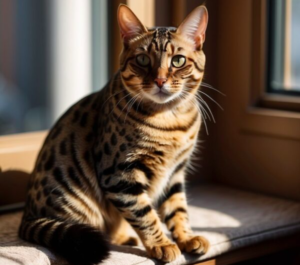
Overview
Bengals are known for their striking appearance and high energy levels. Their intelligence is reflected in their ability to solve problems and learn complex tasks.
Training and Activities
Bengals enjoy activities that challenge their minds, such as agility courses and puzzle toys. They can be trained to walk on a leash and perform tricks. Providing them with interactive playtime helps in channeling their energy positively.
Burmese
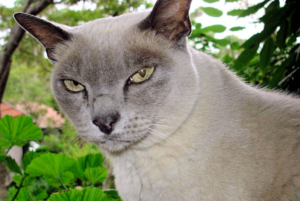
Overview
Burmese cats are affectionate, people-oriented, and intelligent. They enjoy being involved in family activities and can be trained to follow various commands.
Training and Activities
Burmese cats are quick learners and respond well to positive reinforcement. They enjoy learning tricks, playing fetch, and interactive games that stimulate their minds.
Scottish Fold
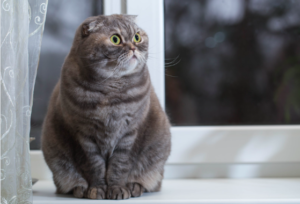
Overview
Scottish Folds are known for their distinctive folded ears and sweet demeanor. Despite their calm appearance, they are intelligent and can learn quickly.
Training and Activities
Scottish Folds enjoy interactive toys and games. They can learn tricks and commands and appreciate routines that keep their minds engaged.
Training Tips for Intelligent Cats
Start Early
Begin training your cat as early as possible. Kittens are more receptive to learning new behaviors and routines.
Use Positive Reinforcement
Reward your cat with treats, praise, or playtime whenever they successfully perform a desired behavior. Positive reinforcement strengthens the association between the action and the reward.
Keep Sessions Short and Fun
Cats have shorter attention spans than dogs, so keep training sessions brief and enjoyable. Incorporate playtime to make learning fun for your cat.
Be Patient and Consistent
Patience and consistency are key when training cats. Repeat commands and routines regularly, and avoid punishing your cat for mistakes. Consistency helps reinforce learning and builds trust.
Challenges of Training Intelligent Cats
Independence and Stubbornness
Intelligent cats can sometimes be independent and stubborn. They might choose to ignore commands if they are not in the mood, so it’s important to understand their behavior and work with it.
Need for Mental Stimulation
Highly intelligent cats require constant mental stimulation. Boredom can lead to behavioral issues, so ensure they have plenty of toys, activities, and interaction to keep their minds engaged.
Managing High Energy Levels
Breeds like Bengals have high energy levels that need to be managed. Providing them with enough physical and mental exercise is crucial to prevent destructive behavior.
Living with Intelligent Cats
Creating an Enriched Environment
An enriched environment is essential for intelligent cats. This includes a variety of toys, climbing structures, scratching posts, and interactive feeders to keep them stimulated.
Social Interaction
Intelligent cats thrive on social interaction. Spend quality time playing, training, and simply bonding with your cat to ensure they feel valued and engaged.
Understanding Their Needs
Each intelligent breed has its own unique needs and preferences. Understanding these and catering to them will help you build a strong and positive relationship with your cat.
Conclusion
Owning an intelligent cat can be an incredibly rewarding experience. These quick learners bring joy, challenge, and companionship to their owners. By understanding their unique characteristics and providing the right environment and training, you can foster a deep and fulfilling relationship with your feline friend.
Whether you choose an Abyssinian, Siamese, Bengal, Burmese, or Scottish Fold, you’re sure to enjoy the remarkable intelligence and personality they bring into your home.
Frequently Asked Questions (FAQs)
What makes a cat breed intelligent?
Intelligent cat breeds often show high levels of problem-solving abilities, adaptability, and social learning. They can quickly learn commands, tricks, and routines.
Can all cats be trained?
While some breeds are more receptive to training than others, all cats can be trained to some extent. Patience, consistency, and positive reinforcement are key to successful training.
What are the best toys for intelligent cats?
Interactive toys, puzzle feeders, and climbing structures are ideal for intelligent cats. These toys provide mental stimulation and keep them engaged.
How do I keep my intelligent cat from getting bored?
Provide a variety of toys, engage in regular playtime, and introduce new activities regularly. Rotating toys and creating an enriched environment also help prevent boredom.
Are intelligent cats more difficult to care for?
Intelligent cats can be more demanding in terms of mental stimulation and interaction. However, with the right approach and environment, they can be delightful companions.
We appreciate you for taking the time to read this article!
Finally, we hope you found this article interesting? And what do you think about ”Clever Cats: Breeds That Learn Fast!?”
Please feel free to share or inform your friends about this article and this site, thanks!
And let us know if you observe something that isn’t quite right.
Cats
The Enchanting Scottish Fold: A Guide to the Adorable Feline with Folded Ears
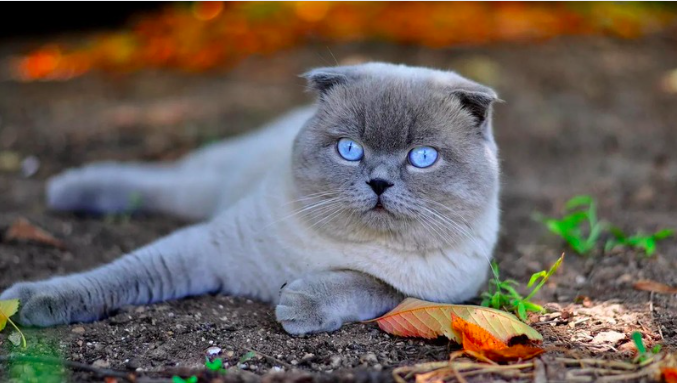
The Enchanting Scottish Fold: A Guide to the Adorable Feline with Folded Ears
Welcome to the world of the Scottish Fold cat, where charm and curiosity meet in an irresistibly adorable package. With their distinctive folded ears and sweet expression, Scottish Folds have captured the hearts of cat lovers around the world. Originally hailing from Scotland, these cats are known for their gentle demeanor, playful nature, and loving personality.
In this comprehensive guide, we will delve into the fascinating world of Scottish Fold cats, exploring their history, physical characteristics, personality traits, and care requirements. Whether you’re a seasoned cat owner or considering adding a feline friend to your family, the Scottish Fold’s unique charm and affectionate nature make them a delightful addition to any home. Join us as we unravel the enchanting tale of the Scottish Fold cat and discover why they are such beloved companions.
Fold
Overview
The Scottish Fold cat is a charming and distinctive breed known for its unique folded ears and sweet expression. Originating from Scotland in the 1960s, these cats have captured the hearts of many with their endearing appearance and affectionate nature. Scottish Folds are known for their gentle and loving temperament, making them wonderful companions for families and individuals alike.
History and Origins
The Scottish Fold breed traces its roots back to a white barn cat named Susie, who was found in Scotland in the early 1960s. Susie had a unique genetic mutation that caused her ears to fold forward, giving her an owl-like appearance. This trait was passed down to her kittens, and thus, the Scottish Fold breed was born. The breed quickly gained popularity for its distinctive look and friendly demeanor, and it was officially recognized by cat registries in the 1970s.
Physical Characteristics
- Folded Ears: The most distinctive feature of the Scottish Fold is its folded ears, which give the cat a sweet and owl-like appearance. Not all Scottish Folds have folded ears; some may have straight ears, known as “straights,” which are also common in the breed.
- Coat and Colors: Scottish Folds can have either a short or long coat, both of which are dense and plush. They come in a variety of colors and patterns, including tabby, tortoiseshell, and solid colors like white, black, and blue.
- Body Structure: Scottish Folds are medium-sized cats with a rounded appearance. They have sturdy bodies, round faces, and large, expressive eyes that give them a sweet and gentle expression.
Personality and Behavior
Scottish Folds are known for their calm and laid-back demeanor. They are affectionate cats that enjoy being around people and are often described as “lap cats” due to their love of cuddling. They are also known for their playful nature and enjoy interactive toys and games. Scottish Folds are generally good with children and other pets, making them a great choice for families.

Health and Care
- Ear Care: Due to their folded ears, Scottish Folds may be prone to ear infections. It’s important to regularly check and clean their ears to prevent issues.
- Grooming: Scottish Folds have dense coats that require regular grooming to prevent matting and tangling. Weekly brushing is usually sufficient to keep their coat in good condition.
- Health Concerns: Scottish Folds are generally healthy, but they may be prone to certain genetic conditions, including a skeletal disorder known as osteochondrodysplasia. Responsible breeding practices can help minimize the risk of these health issues.
Training and Activities
Scottish Folds are intelligent cats that can be trained to perform tricks and commands. They enjoy interactive play and benefit from toys that stimulate their minds and bodies. Providing them with scratching posts and other outlets for their natural behaviors can help keep them happy and healthy.
Compatibility with Families and Other Pets
Scottish Folds are known for their gentle and affectionate nature, making them great companions for families. They are good with children and other pets, including dogs, and can adapt well to different environments. Their loving and sociable nature makes them a popular choice for households looking for a friendly and affectionate pet.
Conclusion
The Scottish Fold cat is a unique and charming breed known for its folded ears and sweet expression. With their gentle demeanor and affectionate nature, Scottish Folds make wonderful companions for families and individuals alike. Whether you’re looking for a lap cat to cuddle with or a playful friend to keep you entertained, the Scottish Fold cat is sure to bring joy and companionship to your home.
FAQs about Scottish Fold Cats
Why do Scottish Folds have folded ears?
Scottish Folds have a genetic mutation that affects the cartilage in their ears, causing them to fold forward. This unique trait gives them their distinctive appearance.
Are Scottish Folds prone to ear problems due to their folded ears?
Yes, Scottish Folds may be more prone to ear infections due to the fold in their ears, which can trap dirt and moisture. Regular cleaning and monitoring of their ears can help prevent issues.
Do Scottish Folds have any health issues associated with their folded ears?
Scottish Folds may be prone to a condition called osteochondrodysplasia, which affects the development of their cartilage and bones. Responsible breeding practices can help reduce the risk of this condition.
Are Scottish Folds good with children and other pets?
Scottish Folds are known for their gentle and friendly nature, making them good companions for families with children and other pets. They enjoy socializing and being part of the family.
Do Scottish Folds require a lot of grooming?
Scottish Folds have dense coats that require regular grooming to prevent matting and tangles. Weekly brushing is recommended to keep their coat in good condition.
We appreciate you for taking the time to read this article!
Finally, we hope you found this article interesting? And what do you think about ”The Enchanting Scottish Fold: A Guide to the Adorable Feline with Folded Ears!?”
Please feel free to share or inform your friends about this article and this site, thanks!
And let us know if you observe something that isn’t quite right.
Cats
The Enchanting Burmese Cat: Affectionate, Playful, and Loyal
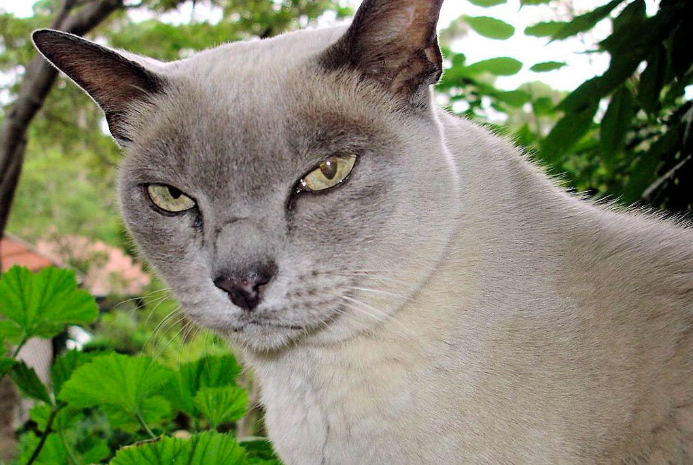
The Enchanting Burmese Cat: Affectionate, Playful, and Loyal
Enter the world of the Burmese cat, where elegance meets affection in a charming feline companion. Originating from the temples of Burma, these cats have captured the hearts of cat lovers worldwide with their striking appearance and loving nature. With their sleek coats, expressive eyes, and playful demeanor, Burmese cats are not just pets; they are cherished members of the family.
In this comprehensive guide, we delve into the captivating world of Burmese cats, exploring their history, physical characteristics, personality traits, and care requirements. Whether you’re a seasoned cat owner or considering adding a feline friend to your family, the Burmese cat’s unique blend of beauty, intelligence, and affection is sure to captivate you. Join us as we unravel the enchanting tale of the Burmese cat and discover why they are such beloved companions.
Burmese
Overview
The Burmese cat is a breed known for its striking appearance and affectionate nature. Originating from Burma (now Myanmar), these cats are renowned for their sleek, muscular bodies, expressive eyes, and silky coats. Burmese cats are often described as “people-oriented,” as they form strong bonds with their human companions and enjoy being part of the family. Their playful and curious nature makes them delightful companions for both children and adults alike.
History and Origins
The history of the Burmese cat can be traced back to ancient Burma, where they were considered sacred and kept by monks in temples. They were later brought to the West in the early 20th century and quickly gained popularity for their striking appearance and affectionate personality. The breed has since become a favorite among cat enthusiasts worldwide, known for its loving and loyal nature.
Physical Characteristics
- Coat and Colors: Burmese cats have short, sleek coats that lie close to the body. They come in a variety of colors, including sable, champagne, blue, and platinum. The coat is soft and silky to the touch, adding to the breed’s overall charm.
- Body Structure: Burmese cats are medium-sized with a muscular build. They have rounded heads, large, expressive eyes, and short, straight noses. Their compact bodies give them a sturdy appearance, and they move with grace and agility.
- Eyes and Ears: Their eyes are one of their most striking features, being large, expressive, and usually a deep, rich color that complements their coat. Their ears are medium-sized, slightly rounded at the tips, and set wide apart on the head.
Personality and Behavior
Burmese cats are known for their affectionate and sociable nature. They are often described as “dog-like” due to their tendency to follow their owners around the house and seek out human companionship. They are also highly intelligent and enjoy interactive play, making them great companions for families with children or other pets.
In addition to their affectionate nature, Burmese cats are also known for their vocalizations. They have a soft, sweet voice that they use to communicate with their owners, often engaging in “conversations” and expressing their needs and desires.

Health and Care
- Grooming: Burmese cats have short coats that require minimal grooming. Weekly brushing is usually sufficient to remove loose hair and keep their coat shiny. They also benefit from regular dental care to prevent oral health issues.
- Diet: A high-quality, balanced diet is essential for maintaining the health and vitality of Burmese cats. They should be fed a diet that is appropriate for their age, size, and activity level to ensure they receive the nutrients they need.
- Health Concerns: Burmese cats are generally healthy, but they can be prone to certain genetic conditions such as hypertrophic cardiomyopathy (HCM) and diabetes. Regular veterinary check-ups and a healthy diet can help manage these risks.
Training and Activities
Burmese cats are intelligent and can be trained to perform various tricks and commands. They enjoy interactive play and thrive on mental stimulation. Providing them with toys, puzzle feeders, and opportunities for play can help keep them entertained and prevent boredom.
Compatibility with Families and Other Pets
Burmese cats are known for their loving and social nature, making them great companions for families. They get along well with children and other pets, including dogs, as long as they are properly introduced. Their affectionate demeanor and playful nature make them a popular choice for households looking for a friendly and engaging pet.
Conclusion
The Burmese cat is a breed beloved for its affectionate nature, striking appearance, and playful personality. Whether you are looking for a loyal companion or a playful friend, the Burmese cat is sure to bring joy and warmth to your home. With their loving nature and sociable demeanor, Burmese cats make wonderful pets for families and individuals alike, enriching their lives with their presence and affection.
FAQs about Burmese Cats
What is the temperament of a Burmese cat like?
Burmese cats are known for their affectionate and social nature. They are often described as “dog-like” due to their loyalty and tendency to follow their owners around the house. They enjoy being involved in family activities and form strong bonds with their human companions.
Are Burmese cats good with children and other pets?
Yes, Burmese cats are generally good with children and other pets. They are playful and enjoy interactive play, making them great companions for families with children. They also get along well with other pets, including dogs, especially if they are introduced properly.
Do Burmese cats require a lot of grooming?
Burmese cats have short, sleek coats that require minimal grooming. Weekly brushing is usually sufficient to remove loose hair and keep their coat shiny. They also benefit from regular dental care to prevent oral health issues.
Are Burmese cats vocal?
Burmese cats are known for their soft, sweet voice, but they are not excessively vocal. They use their voice to communicate with their owners, often engaging in “conversations” and expressing their needs and desires.
What kind of environment is best for a Burmese cat?
Burmese cats thrive in environments where they have plenty of opportunities for play and interaction. They enjoy being part of the family and should have access to toys, scratching posts, and other enrichment activities. They also enjoy having access to outdoor enclosures or safe outdoor spaces where they can explore and indulge their natural instincts.
We appreciate you for taking the time to read this article!
Finally, we hope you found this article interesting? And what do you think about ”The Enchanting Burmese Cat: Affectionate, Playful, and Loyal!?”
Please feel free to share or inform your friends about this article and this site, thanks!
And let us know if you observe something that isn’t quite right.
-

 Pet Care2 years ago
Pet Care2 years agoThe Best Dog Collars For 2022
-

 Dogs2 years ago
Dogs2 years agoBichon Frise: The Happy, Playful, and Cuddly Companion
-

 Trending Pet Stories1 year ago
Trending Pet Stories1 year ago2023 ‘World’s Ugliest Dog’ Winner: Scooter’s Tale of Resilience
-

 Animals3 years ago
Animals3 years agoAre There Animals Having Down Syndrome?
-

 Pets2 years ago
Pets2 years agoThe Fascinating World Of The Red Chameleon
-

 Dogs3 years ago
Dogs3 years agoTop 10 Most Popular Dog Breeds According To AKC.
-

 Dogs3 years ago
Dogs3 years ago21 Dog Breeds That Resemble Bears Or Teddy Bears!
-

 Dogs3 years ago
Dogs3 years agoEskimo Dogs from Canada – What Are They? – Find Out!


